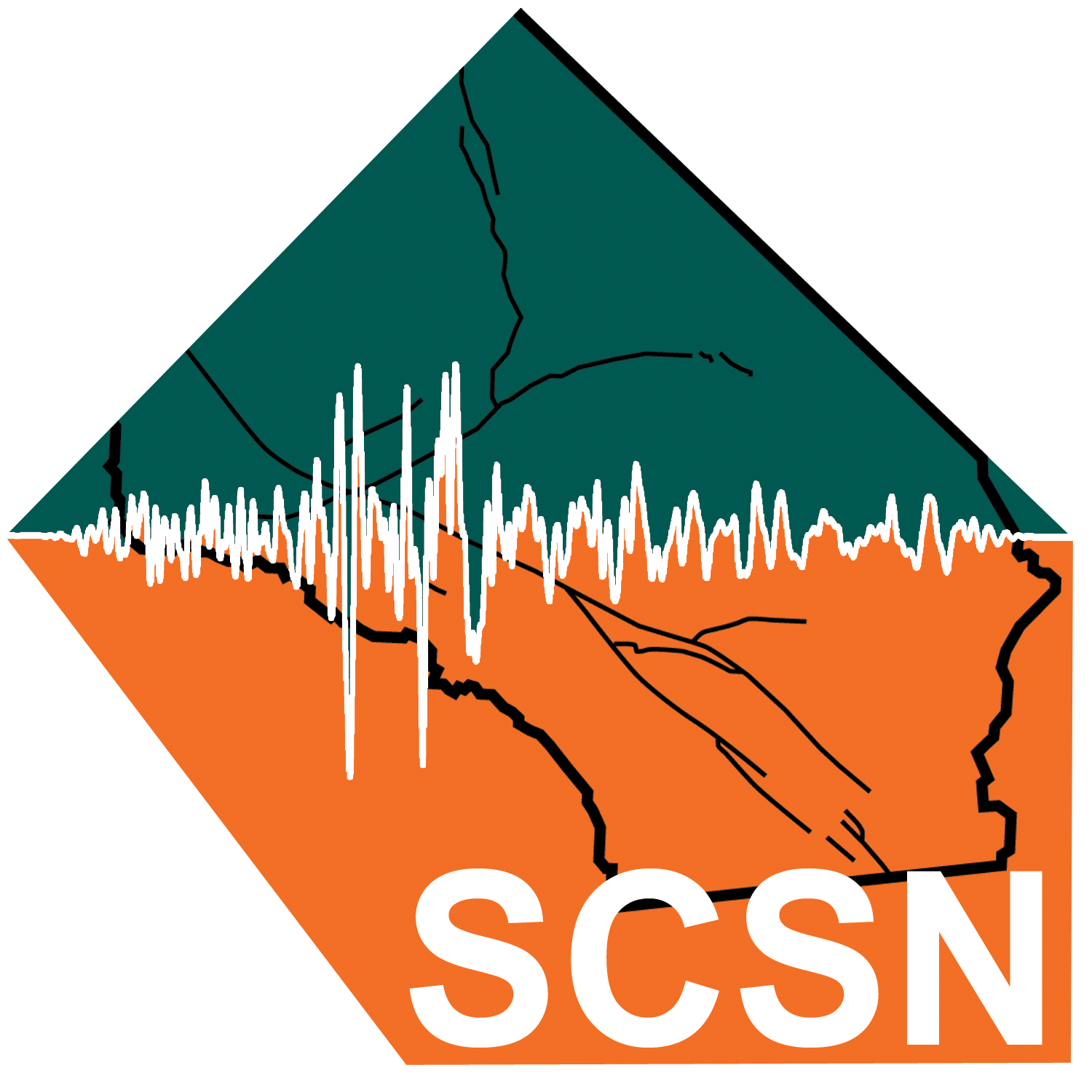Earthquake Information
Chronological Earthquake Index
Northridge Earthquake
TYPE OF FAULTING: blind thrust
TIME: January 17, 1994 / 4:30:55 am PST
LOCATION: 34° 12.80' N, 118° 32.22' W 20 miles west-northwest of Los Angeles 1 mile south-southwest of Northridge
MAGNITUDE: MW6.7
FAULTS INVOLVED: Northridge Thrust (also known as Pico Thrust) several other faults experienced minor rupture, rupture during large aftershocks, or triggered slip
DEPTH: 18.4 km
At 4:30 am, on January 17, 1994, residents of the greater Los Angeles area were rudely awakened by the strong shaking of the Northridge earthquake. This was the first earthquake to strike directly under an urban area of the United States since the 1933 Long Beach earthquake.
The earthquake occurred on a blind thrust fault, and produced the strongest ground motions ever instrumentally recorded in an urban setting in North America. Damage was wide-spread, sections of major freeways collapsed, parking structures and office buildings collapsed, and numerous apartment buildings suffered irreparable damage. Damage to wood-frame apartment houses was very widespread in the San Fernando Valley and Santa Monica areas, especially to structures with "soft" first floor or lower-level parking garages. The high accelerations, both vertical and horizontal, lifted structures off of their foundations and/or shifted walls laterally.

(Click thumbnails for more information)
Despite the losses, gains made through earthquake hazard mitigation efforts of the last two decades were obvious. Retrofits of masonry building helped reduce loss of life, hospitals suffered less structural damage than in 1971 San Fernando earthquake, and emergency response was exemplary. The Northridge earthquake proved that preparing for earthquakes CAN greatly reduce the risk.
The earthquake brought home several important lessons. When earthquakes occur directly beneath a city, it will be subjected to ground motions with peak accelerations approaching the force of gravity, exceeding the levels of shaking anticipated by building codes. Systems of concealed faults under the Los Angeles area are more complex than previously thought. The significant fracturing of welds in steel frame buildings was unexpected because of the ductility of steel. Understanding the cause and correcting the problem will be essential to continue building in earthquake prone regions.
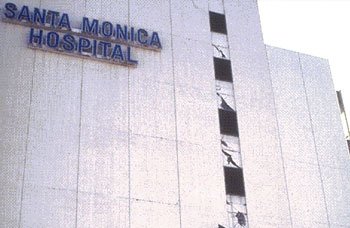
Damage in Santa Monica
The hospital in Santa Monica shows classic "X"-pattern cracks
as evidence of the damage it sustained during the Northridge
earthquake. (photo: Gregory Davis)
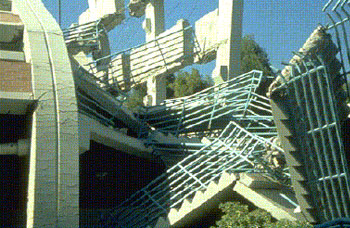
CSUN Parking Structure Damage
Tangled, collapsed stairwell at the northeast corner of the
CSUN parking structure. Total damage to the campus was
estimated at between $250 and $350 million. (photo: Ken Fowler)
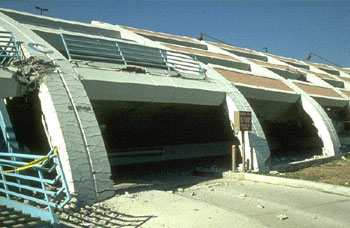
CSUN Parking Structure Damage
This 2500-car-capacity parking structure, a recent (1991)
addition to the Cal State University - Northridge campus,
suffered partial collapse in the intense shaking of the Northridge
earthquake. A close-up of of this entrance to the parking structure
shows the closely spaced fractures in the reinforced concrete
columns which allowed "bending" of the outer wall.
(photo: Ken Fowler)
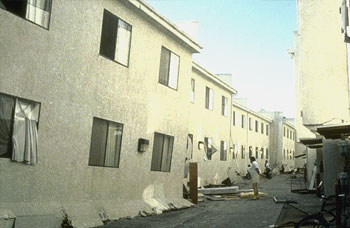
San Fernando Valley Apartment Damage
The apartment house on the left has collapsed onto the former
garage level. The apartment house on the right, a twin to the
collapsed structure, did not fail. (photo: Ken Fowler)
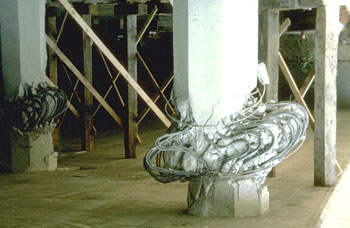
Simi Valley Freeway Damage
Buckling of freeway support columns under the Simi Valley
Freeway at the north end of the San Fernando Valley. This buckling
shows the structural failure produced by high vertical acceleration.
( photo: Ta-Liang Teng)
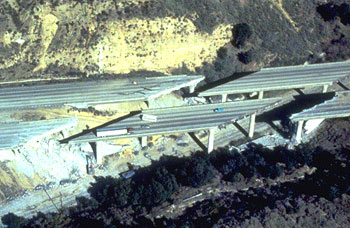
I-5 & Antelope Valley Freeway Damage
Aerial view of the collapsed freeway interchange between I-5 and
the Antelope Valley Freeway (State 14). (photo: Kerry Sieh)
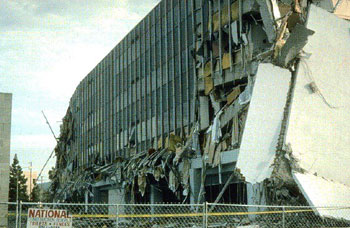
Health Clinic Damage
This picture shows the exterior paneling from the former second
floor hanging down across the top of the first floor. (photo: Gregory Davis)
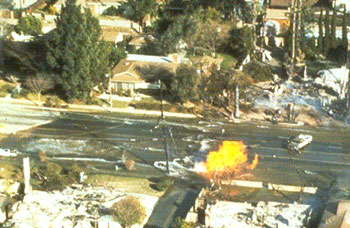
Damage on Balboa Boulevard
Both gas and water pipes burst beneath Balboa Boulevard
north of the Simi Valley Freeway from the force of the main
shock, creating this bizarre and destructive combination
of fire and water. (photo: Kerry Sieh)
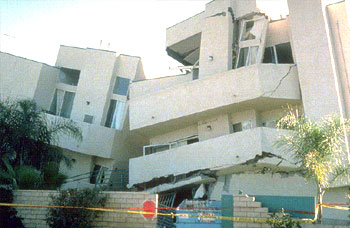
San Fernando Valley Apartment Damage
Rear view of a damaged three-story apartment house with a
first-level garage. The two wings of the building collapsed into
each other across the formerly intervening courtyard during the
partial collapse of the parking level. (photo: Gregory Davis)
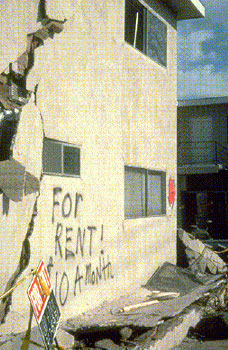
More San Fernando Valley Apartment Damage
The aftermath of the earthquake saw a few cases of cynical humor
among shattered buildings. (photo: Gregory Davis)

Sherman Oaks Apartment Damage
View of cars in a partially collapsed split lower-level garage of
an apartment house on the northeast corner of Hazeltine and
Magnolia avenues, Sherman Oaks. (photo: Gregory Davis)
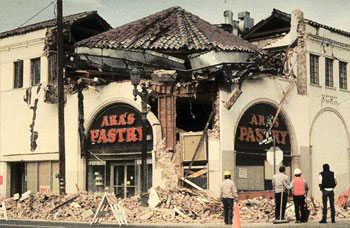
Damage in Hollywood
Workers survey the corner collapse of the Ara's Pastry store
on Hollywood Boulevard in East Hollywood. (photo: Gregory Davis)
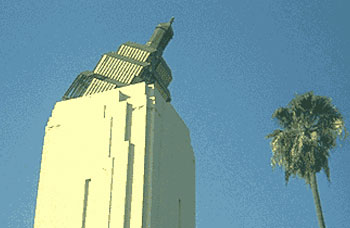
Damage in Hollywood
The toppled crown atop the 95-foot high tower of a 1920 Art
Deco building on Hollywood Boulevard. (photo: Ken Fowler)

Santa Monica Freeway Damage
Part of Interstate 10 west of downtown Los Angeles collapsed
in the shaking of the Northridge earthquake. This section of the
Santa Monica Freeway had been built across drained wetlands,
which is probably why it experienced seismic failure. The damage
here was repaired within three months. (photo: U.S. Department
of Transportation)
